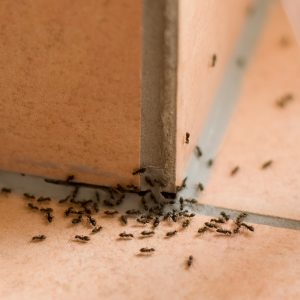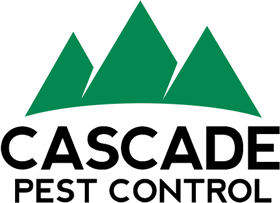Author: Kurt Treftz, Cascade Pest Control
Ants! These ubiquitous little critters seem unavoidable. And you wouldn’t be wrong in assuming that they are everywhere. Scientists have identified at least 12,000 different species of these highly social, adaptable insects on every continent (except Antarctica). Understanding a bit more about ants and their behavior can lead to more effective control of these pests in homes and businesses.
Understanding Local Ants
- Carpenter: These large ants are 6-13mm long and vary in color with black heads and abdomens with either a black or dark red thorax. They nest in decaying wood and cause structural damage if they are not caught.
- Argentine: This small-bodied ant is just about 2mm long with a light to dark brown color. Originally from South America, this invasive species has become established in the continental United States. They usually form shallow nests in loose leaves, cracks in concrete walls, in between boards and timbers, and even in human belongings. They reproduce quickly and are extremely social.
- Pharaoh: Yellow or light brown in color, this ant is a particular nuisance indoors. They are small and build large colonies. But they can be tricky to eradicate because if the colony is broken up, they just form new colonies in the same location.
- Moisture: As their name suggests, these small, yellow ants are attracted to moist areas. If you have a leak, you could be luring in these little pests.
- Odorous House: Also known as the house ant, these are often the pests you find trailing from an entry point to a food source in your house. You can be doubly sure it is an odorous house ant if it releases an unpleasant scent if crushed. They are small and black and will quickly populate an area if they find a source of food.
- Pavement: These outdoor ants are often seen on and around sidewalks where they are foraging for food for the nest they’ve built under the concrete. They can actually do damage to sidewalks and patios with their large numbers.
Understanding Ants’ Social Structure
Why is this important? Social Structure influences ants’ movement and can help in placing bait or otherwise stopping their infestation of your home or business. Since ants are extremely social creatures, it is likely that if you’ve seen one, you are likely to see more. Most of the time you see the worker (foraging) ants who bring food back to the colony.
- Queens: The queen of the colony is tasked with laying the eggs and ensuring the reproduction of the colony.
- Males: The sole purpose of the male ant is to mate with the queen and propagate the species.
- Worker ants: The bulk of the ant colony is worker ants who are responsible for foraging for food and caring for the young.
Since ants are extremely social and follow a strict hierarchical society, they are predictable, and the correct implementation of preventive measures is more effective.

Understanding Ant Colonies & Communication
Why is this important? These very social insects communicate through chemical scents called pheromones. Scouts can leave trails that others can follow and soon you are entertaining a whole colony of ants. By disrupting the trail to food sources or the communication within the colony, ants can be kept at bay.
- Pheromones: These chemical scents can help ants identify friend or foe, leave a trail to a food source, or communicate messages within the colony. Pheromone trails are left to communicate with ants coming behind. They are re-enforced by those who follow (verify) the trail. These trails can break down quickly so they need constant reinforcement.
- Division of labor: Within the colony, ants have different roles as mentioned above, but they also have different jobs. Work ants might be in charge of building the nest, caring for the young, scouting for food, and foraging for food.
Understanding how ants communicate and work in the colony can better help us design control measures that disrupt and repel them. Ants have quite a sophisticated system of communication and will focus on the specific needs of the colony. Even in scouting for food, the lead ant might be in search of oily food or carb-rich food or sweet food depending on the needs of those at home. Then the pheromone trails they leave will direct others, like foraging ants, to come pick up what they’ve found. If you can create the bait that the ants are targeting, you are better able to eradicate them. Leaving out some test baits to see what is attracting the ants can be a good way to learn their preferences and target them more effectively.
Understanding Signs of Ant Presence
Why is this important? Knowing ants are present means that you can respond quickly and effectively to any potential threats. It is always better to be proactive than reactive. Getting ahead of an infestation before it gets out of hand is key.

- Ants: Of course, if you see an ant you can likely assume that there are more coming.
- Debris: In the case of carpenter ants, you might see sawdust-like evidence that they have been chewing. (Carpenter ants don’t eat the wood like termites but they do chew through it creating holes and gaps that compromise the structure).
- Discarded ant wings: During the late spring and early summer, winged females and winged males may emerge from the colony to mate. Then they discard their wings. Evidence of discarded wings may signal a colony nearby.
- Nest: You might even see visual evidence of an ants’ nest in your yard or sidewalk.
Timely intervention is important in preventing and stopping ants from making their way into your home or business. Stay vigilant and you can stop things before they get started.
Understanding how ants behave makes efforts to control them much more effective. These fascinating insects are complex, with a well-developed social structure and communication system. Knowing what drives them helps us keep them in their place.
